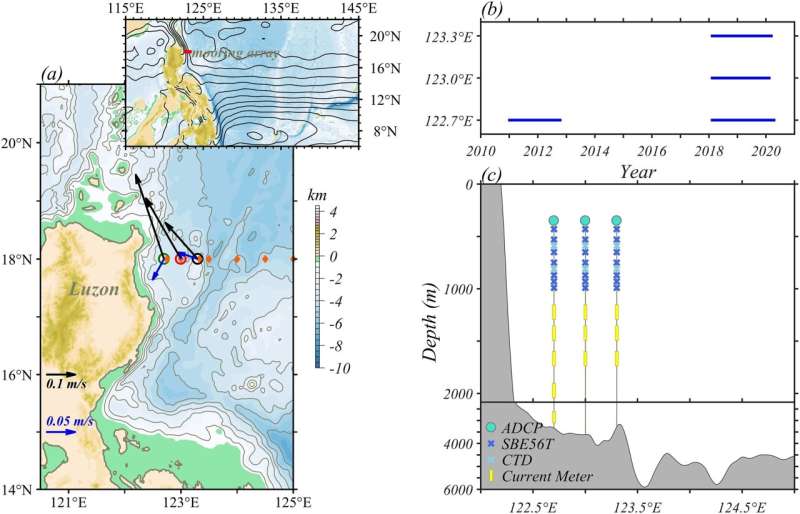Tropical and subtropical wind forcing could affect interannual variability of Kuroshio and Luzon undercurrent

Kuroshio in the western North Pacific is one of the world's most energetic western boundary currents. To the east of Luzon Island, the northward Kuroshio at its origin and the underlying southward Luzon Undercurrent (LUC), play an important role in shaping marine ecosystems and climate in the Pacific and neighboring marginal seas by transporting a large amount of mass and heat.
Recently, the research team led by Prof. Hu Shijian from the Institute of Oceanology of the Chinese Academy of Sciences (IOCAS) reported the interannual variability of the Kuroshio and LUC observed by a mooring array and investigated the role of tropical and subtropical wind forcing in the North Pacific. The study was published in .
Researchers found that the interannual variations of upper-layer Kuroshio is in phase with the lower-layer LUC in direct velocity observations from a mooring during December 2010–October 2012 and three moorings during January 2018–May 2020 deployed at 18°N. The interannual variability is strong in the Kuroshio but weakens substantially in the LUC.
The team proposed a proxy of the Kuroshio and LUC based on good agreement between the acoustic Doppler current profiler (ADCP) and satellite altimeter measurements. The proxy during 1993–2020 showed that the interannual sea level slope across the Kuroshio is primarily associated with sea level fluctuations on its eastern flank.
Furthermore, diagnostic analysis and sensitivity experiments from a simplified ocean model suggested that the wind forcing in the subtropical northwestern Pacific plays an essential role in the interannual variability of Kuroshio and LUC's strength during the observation periods in 2011 and 2018–2020, although the tropical winds dominated the interannual variability of the two boundary currents during most of the past three decades (1993–2020).
The pronounced anomalous wind forcing was suggested to further exert significant influence in the development of water mass properties. "The mooring observations show that the subsurface water mass in the LUC at the depth of approximately 650–800 m experienced a considerable freshening event from July 2019 to at least January 2020, resulting from abnormally strong subtropical wind forcing," said Ma Jie, first author of this study.
"Our findings deepen the understanding of the western boundary currents in the Indo-Pacific Ocean where the impact on the process of global warming is crucial," said Prof. Hu, the corresponding author of this study.
More information: Jie Ma et al, Observed interannual variability of the Kuroshio and Luzon Undercurrent associated with tropical and subtropical wind forcing, Progress in Oceanography (2023).
Provided by Chinese Academy of Sciences





















